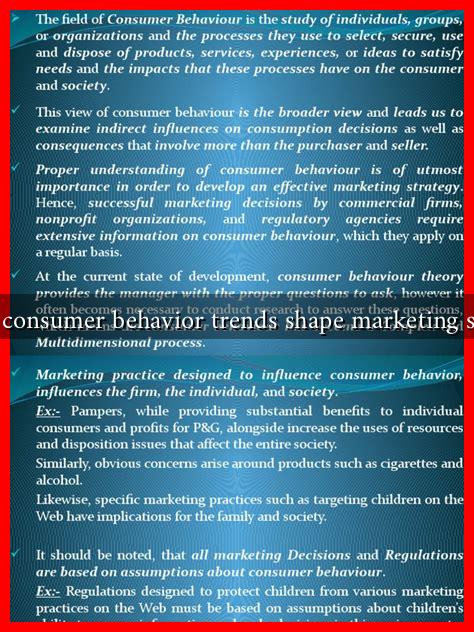-
Table of Contents
- How Do Consumer Behavior Trends Shape Marketing Strategies?
- The Importance of Understanding Consumer Behavior
- Current Consumer Behavior Trends
- How Trends Influence Marketing Strategies
- 1. Personalization in Marketing
- 2. Emphasis on Sustainability
- 3. Leveraging Digital Platforms
- Case Studies: Successful Adaptation to Consumer Trends
- Conclusion
How Do Consumer Behavior Trends Shape Marketing Strategies?
In the ever-evolving landscape of marketing, understanding consumer behavior is paramount. As consumers’ preferences, values, and purchasing habits shift, businesses must adapt their marketing strategies to remain relevant and effective. This article explores how consumer behavior trends shape marketing strategies, providing insights into the mechanisms at play and offering real-world examples to illustrate these concepts.
The Importance of Understanding Consumer Behavior
Consumer behavior refers to the study of individuals and groups in selecting, purchasing, using, and disposing of products, services, ideas, or experiences. Understanding these behaviors is crucial for marketers for several reasons:
- Targeted Marketing: By analyzing consumer behavior, businesses can identify their target audience more accurately.
- Product Development: Insights into consumer preferences can guide product innovation and development.
- Customer Retention: Understanding what drives customer loyalty can help businesses create strategies to retain customers.
Current Consumer Behavior Trends
Several key trends in consumer behavior are shaping marketing strategies today:
- Increased Demand for Personalization: Consumers increasingly expect personalized experiences. According to a study by Epsilon, 80% of consumers are more likely to make a purchase when brands offer personalized experiences.
- Sustainability and Ethical Consumption: Modern consumers are more conscious of their environmental impact. A Nielsen report found that 66% of global consumers are willing to pay more for sustainable brands.
- Digital Engagement: The rise of social media and e-commerce has transformed how consumers interact with brands. A report by Statista indicates that over 2.8 billion people use social media worldwide, making it a critical platform for marketing.
How Trends Influence Marketing Strategies
As consumer behavior trends evolve, businesses must adapt their marketing strategies accordingly. Here are some ways these trends influence marketing:
1. Personalization in Marketing
With the demand for personalized experiences on the rise, companies are leveraging data analytics to tailor their marketing efforts. For instance, Netflix uses algorithms to recommend shows based on users’ viewing history, enhancing user engagement and satisfaction.
2. Emphasis on Sustainability
Brands are increasingly adopting sustainable practices to appeal to environmentally conscious consumers. For example, Unilever has committed to making all of its plastic packaging recyclable, reusable, or compostable by 2025. This commitment not only aligns with consumer values but also enhances brand loyalty.
3. Leveraging Digital Platforms
As consumers spend more time online, businesses are shifting their focus to digital marketing strategies. Social media platforms like Instagram and TikTok have become essential for brand promotion. For example, the beauty brand Glossier has successfully built a community-driven marketing strategy through social media engagement, resulting in a loyal customer base.
Case Studies: Successful Adaptation to Consumer Trends
Several companies have successfully adapted their marketing strategies in response to changing consumer behaviors:
- Coca-Cola: The brand launched its “Share a Coke” campaign, which personalized bottles with popular names. This strategy not only increased sales but also fostered a sense of connection with consumers.
- Patagonia: Known for its commitment to sustainability, Patagonia’s marketing strategy emphasizes environmental activism. Their “Don’t Buy This Jacket” campaign encouraged consumers to think twice about their purchases, reinforcing their brand values.
Conclusion
In conclusion, consumer behavior trends play a pivotal role in shaping marketing strategies. As businesses navigate the complexities of modern consumer preferences, understanding these trends is essential for success. By embracing personalization, sustainability, and digital engagement, companies can create effective marketing strategies that resonate with their target audiences. The ability to adapt to these trends not only enhances customer satisfaction but also drives brand loyalty and long-term success.
For further reading on consumer behavior and marketing strategies, you can explore resources from Harvard Business Review and Forbes.

